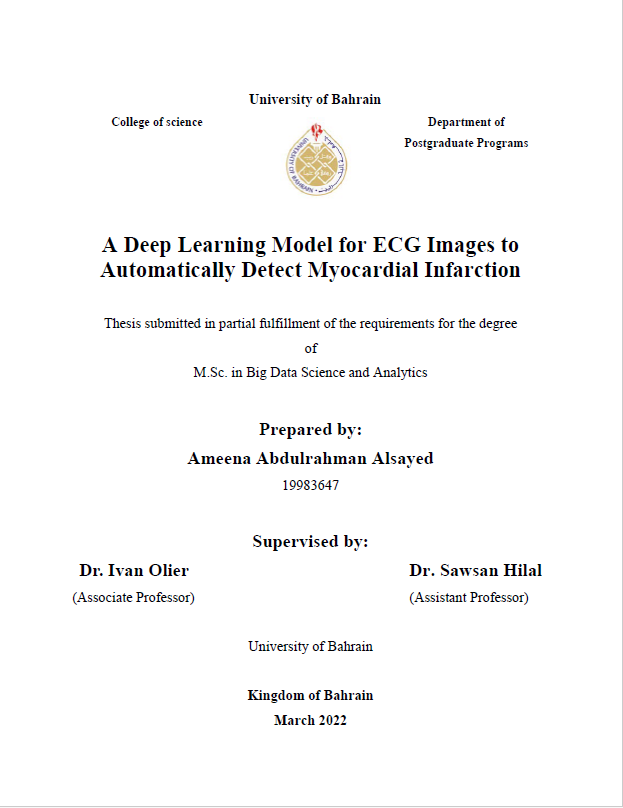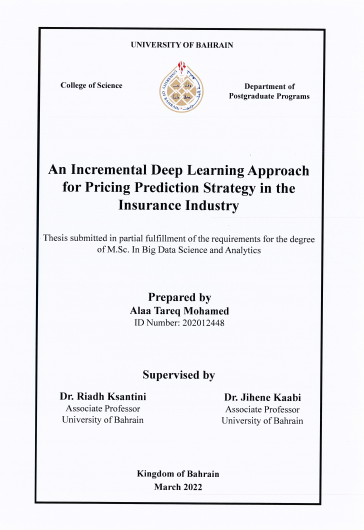A Deep Learning Model for ECG Images to Automatically Detect Myocardial Infarction
وكيل مرتبط
Hilal, Sawsan, مشرف الرسالة العلمية
تاريخ النشر
2022
اللغة
الأنجليزية
مدى
[1], 11, 67, 16 [1] pages
الموضوع
مكان المؤسسة
Sakhir, Bahrain
نوع الرسالة الجامعية
Thesis (Master)
الجهه المانحه
"""University of Bahrain, College of Science, Department of Postgraduate Programs
الملخص الإنجليزي
Abstract:
Cardiovascular Diseases are the number one cause for deaths in the whole world and heart
attack or Myocardial Infarction (MI) reserves the biggest share in this rate. MI is defined as a block
in the heart coronary artery that causes deprivation from oxygen to the heart muscles and could
lead to the death of that muscle or even the death of the patient. Currently MI is first diagnosed by
recording ECG monitor for the patient with chest pain then the interpretation of the results is done
manually by the cardiologist, but this process is very hard and time consuming and threatens lives
if not treated as fast as possible. With the revolution of machine learning and deep learning it was
needed to ease the pressure on the doctors and help them by computerizing this process to provide
the diagnoses in short and reliable manner. Many studies and models were implemented for this
purpose and most of them employed Convolution Neural Network for its strong ability to extract
features and learn them from high dimension datasets such as images and 1-dimension signals or
waves. Few research studied the use of image-based ECG to detect MI. In this study an effective
deep learning neural network was used to classify ECG images into MI and normal cases. Simple
network structure was used for the mentioned purpose and the fully connected layer was omitted
due to the issues related to its usage and the original image size was used with 12 leads ECG. The
model was suffering from overfitting, therefor a combination of optimization techniques was used
to reduce it and get good performance. The data was fully augmented and oversampled as well to
reduce the overfitting problem. Physikalisch-tachnische bundesanstalt (PTB) Diagnostic ECG database
was used for the model experiments. the Area Under the Curve was used as the performamve ovaluation
metrics. The rosults obtained wore promising, the model achioved 99% AUC in training, 96% in validation
and 94% in testing predictions where the model could datect MI with 98% comactly classified. It was
concluded that the model could detect MI effectively and data augmentation with oversampling had the
main impact on the performance.
المجموعة
المعرف
https://digitalrepository.uob.edu.bh/id/885fd9e1-f3e7-4b4c-9932-507582b5fb97
مواد أخرى لنفس الموضوع

